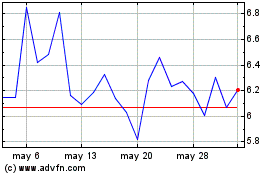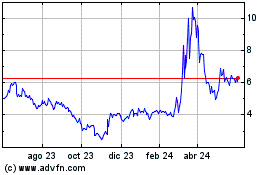Lantern Pharma (NASDAQ: LTRN), a clinical-stage
biopharmaceutical company leveraging artificial intelligence (AI)
and machine learning to transform the cost, pace, and timeline of
oncology drug discovery and development, today announced a
significant advancement demonstrating the preclinical synergy of
LP-184 with checkpoint inhibitors and the ability of LP-184 to
resensitize tumors that have become non-responsive to Anti-PD1
therapies. The company will be presenting preliminary data from the
recent work done in conjunction with Drs. Yong Du and Shiaw-Yih
(Phoebus) Lin at MD Anderson at The Immuno-Oncology Summit 2024 in
Philadelphia.
The data will be presented in the form of poster entitled,
LP-184, a Novel Acylfulvene, Sensitizes Immuno-Refractory Triple
Negative Breast Cancers (TNBCs) To Anti-PD1 Therapy by Affecting
the Tumor Microenvironment, (assigned Poster # P17). The poster
highlights the following key points:
- LP-184 seems to potentiate anti-PD1 response in a mouse model
of TNBC that is non-hypermutated and resistant to immunotherapy in
the absence of LP-184.
- LP-184 can potentially transform immunologically “cold” tumors
(non-responsive to IO therapies) into “hot” tumors (responsive to
IO therapies) by modulating T cell activity in the tumor
microenvironment and inducing a replication stress response
defect.1
- LP-184 seems to reshape the tumor microenvironment (TME) by
significantly reducing the amount of M2 macrophages – which are
associated with tumor drug resistance, tumor cell proliferation and
are involved in helping the tumor cells escape immune cell
death2.
- LP-184 combined with an anti-PD1 agent elicited a greater
anti-tumor response than monotherapies in mouse TNBC tumors that
are non-hypermutated and resistant to immune checkpoint
inhibitors
LP-184 is being investigated in an ongoing first-in-human Phase
1 trial (NCT05933265) in advanced recurrent solid tumors to
establish a maximum tolerated dose and assess its overall safety
and suitability in more targeted cancer indications, including
TNBC.
Immunotherapy with checkpoint inhibitors (CPI) account for
nearly $48 billion in sales annually according to Grand View
Research and has profoundly changed the landscape of treatment in
oncology since their introduction by providing outstanding durable
responses and potential long-term remission in a significant
proportion of cancer patients.3 Treatments are now approved for
more than thirty cancer indications including melanoma, lung,
colon, renal, urothelial, gastric, liver, lymphoma, head and neck
but only a minority of patients benefit (10% to 50% depending on
the stage and site of the tumor) and often patients will be
non-responsive to CPI.
"Our drug-candidate, LP-184 has shown very
promising preclinical evidence supporting its role in
immuno-oncology to help patients improve response and durability of
response to IO therapies. This work in collaboration with
MD-Anderson supports our initial AI-driven hypothesis regarding the
role of LP-184 to synergize with PD1 and PDL1 drugs and potentially
improve the lives of a greater number of cancer patients globally.
We look forward to developing combination drug studies and clinical
trials with LP-184 and checkpoint inhibitors," said Lantern Chief
Scientific Officer, Kishor Bhatia, PhD, FRCP.
The entirety of the data and poster to be presented at The
Immuno-Oncology Summit 2024 in Philadelphia will be available on
the Lantern website after 6pm Eastern today, August 7th 2024.
About Lantern Pharma:
Lantern Pharma (NASDAQ: LTRN) is an AI company transforming the
cost, pace, and timeline of oncology drug discovery and
development. Our proprietary AI and machine learning (ML) platform,
RADR®, leverages over 60 billion oncology-focused data points and a
library of 200+ advanced ML algorithms to help solve
billion-dollar, real-world problems in oncology drug development.
By harnessing the power of AI and with input from world-class
scientific advisors and collaborators, we have accelerated the
development of our growing pipeline of therapies that span multiple
cancer indications, including both solid tumors and blood cancers
and an antibody-drug conjugate (ADC) program. On average, our newly
developed drug programs have been advanced from initial AI insights
to first-in-human clinical trials in 2-3 years and at approximately
$1.0 - 2.5 million per program.
Our lead development programs include a Phase 2 clinical program
and multiple Phase 1 clinical trials. We have also established a
wholly-owned subsidiary, Starlight Therapeutics, to focus
exclusively on the clinical execution of our promising therapies
for CNS and brain cancers, many of which have no effective
treatment options. Our AI-driven pipeline of innovative product
candidates is estimated to have a combined annual market potential
of over $15 billion USD and have the potential to provide
life-changing therapies to hundreds of thousands of cancer patients
across the world.
Please find more information at:
- Website: www.lanternpharma.com
- LinkedIn: https://www.linkedin.com/company/lanternpharma/
- X: @lanternpharma
Forward-looking Statements:
This press release contains forward-looking statements within
the meaning of Section 27A of the Securities Act of 1933, as
amended, and Section 21E of the Securities Exchange Act of 1934, as
amended. These forward-looking statements include, among other
things, statements relating to: future events or our future
financial performance; the potential advantages of our RADR®
platform in identifying drug candidates and patient populations
that are likely to respond to a drug candidate; our strategic plans
to advance the development of our drug candidates and antibody drug
conjugate (ADC) development program; estimates regarding the
development timing for our drug candidates and ADC development
program; expectations and estimates regarding clinical trial timing
and patient enrollment; our research and development efforts of our
internal drug discovery programs and the utilization of our RADR®
platform to streamline the drug development process; our intention
to leverage artificial intelligence, machine learning and genomic
data to streamline and transform the pace, risk and cost of
oncology drug discovery and development and to identify patient
populations that would likely respond to a drug candidate;
estimates regarding patient populations, potential markets and
potential market sizes; sales estimates for our drug candidates and
our plans to discover and develop drug candidates and to maximize
their commercial potential by advancing such drug candidates
ourselves or in collaboration with others. Any statements that are
not statements of historical fact (including, without limitation,
statements that use words such as "anticipate," "believe,"
"contemplate," "could," "estimate," "expect," "intend," "seek,"
"may," "might," "plan," "potential," "predict," "project,"
"target," “model,” "objective," "aim," "upcoming," "should,"
"will," "would," or the negative of these words or other similar
expressions) should be considered forward-looking statements. There
are a number of important factors that could cause our actual
results to differ materially from those indicated by the
forward-looking statements, such as (i) the risk that our research
and the research of our collaborators may not be successful, (ii)
the risk that promising observations in preclinical studies do not
ensure that later studies and development will be successful, (iii)
the risk that we may not be successful in licensing potential
candidates or in completing potential partnerships and
collaborations, (iv) the risk that none of our product candidates
has received FDA marketing approval, and we may not be able to
successfully initiate, conduct, or conclude clinical testing for or
obtain marketing approval for our product candidates, (v) the risk
that no drug product based on our proprietary RADR® AI platform has
received FDA marketing approval or otherwise been incorporated into
a commercial product, and (vi) those other factors set forth in the
Risk Factors section in our Annual Report on Form 10-K for the year
ended December 31, 2023, filed with the Securities and Exchange
Commission on March 18, 2024. You may access our Annual Report on
Form 10-K for the year ended December 31, 2023 under the investor
SEC filings tab of our website at www.lanternpharma.com or on the
SEC's website at www.sec.gov. Given these risks and uncertainties,
we can give no assurances that our forward-looking statements will
prove to be accurate, or that any other results or events projected
or contemplated by our forward-looking statements will in fact
occur, and we caution investors not to place undue reliance on
these statements. All forward-looking statements in this press
release represent our judgment as of the date hereof, and, except
as otherwise required by law, we disclaim any obligation to update
any forward-looking statements to conform the statement to actual
results or changes in our expectations.
1 McGrail DJ, Pilié PG, Dai H, Lam TNA, Liang Y, Voorwerk L, Kok
M, Zhang XH, Rosen JM, Heimberger AB, Peterson CB, Jonasch E,
Lin SY Replication stress response defects are associated
with response to immune checkpoint blockade in nonhypermutated
cancers. Sci Transl Med. 2021 Oct 27;13(617):eabe6201. doi:
10.1126/scitranslmed.abe6201
2 Wang, S., Wang, J., Chen, Z. et al. Targeting M2-like
tumor-associated macrophages is a potential therapeutic approach to
overcome antitumor drug resistance. npj Precis. Onc. 8, 31
(2024). https://doi.org/10.1038/s41698-024-00522-z
3 C.L. Gerard, J. Delyon, A. Wicky, K. Homicsko, Michel A.
Cuendet, O. Michielin, Turning tumors from cold to inflamed to
improve immunotherapy response. Cancer Treatment Reviews, Volume
101, (2021). 102227,
https://doi.org/10.1016/j.ctrv.2021.102227.
View source
version on businesswire.com: https://www.businesswire.com/news/home/20240807808243/en/
Investor Relations mailto: ir@lanternpharma.com ph: (972)
277-1136
Lantern Pharma (NASDAQ:LTRN)
Gráfica de Acción Histórica
De Dic 2024 a Ene 2025

Lantern Pharma (NASDAQ:LTRN)
Gráfica de Acción Histórica
De Ene 2024 a Ene 2025
